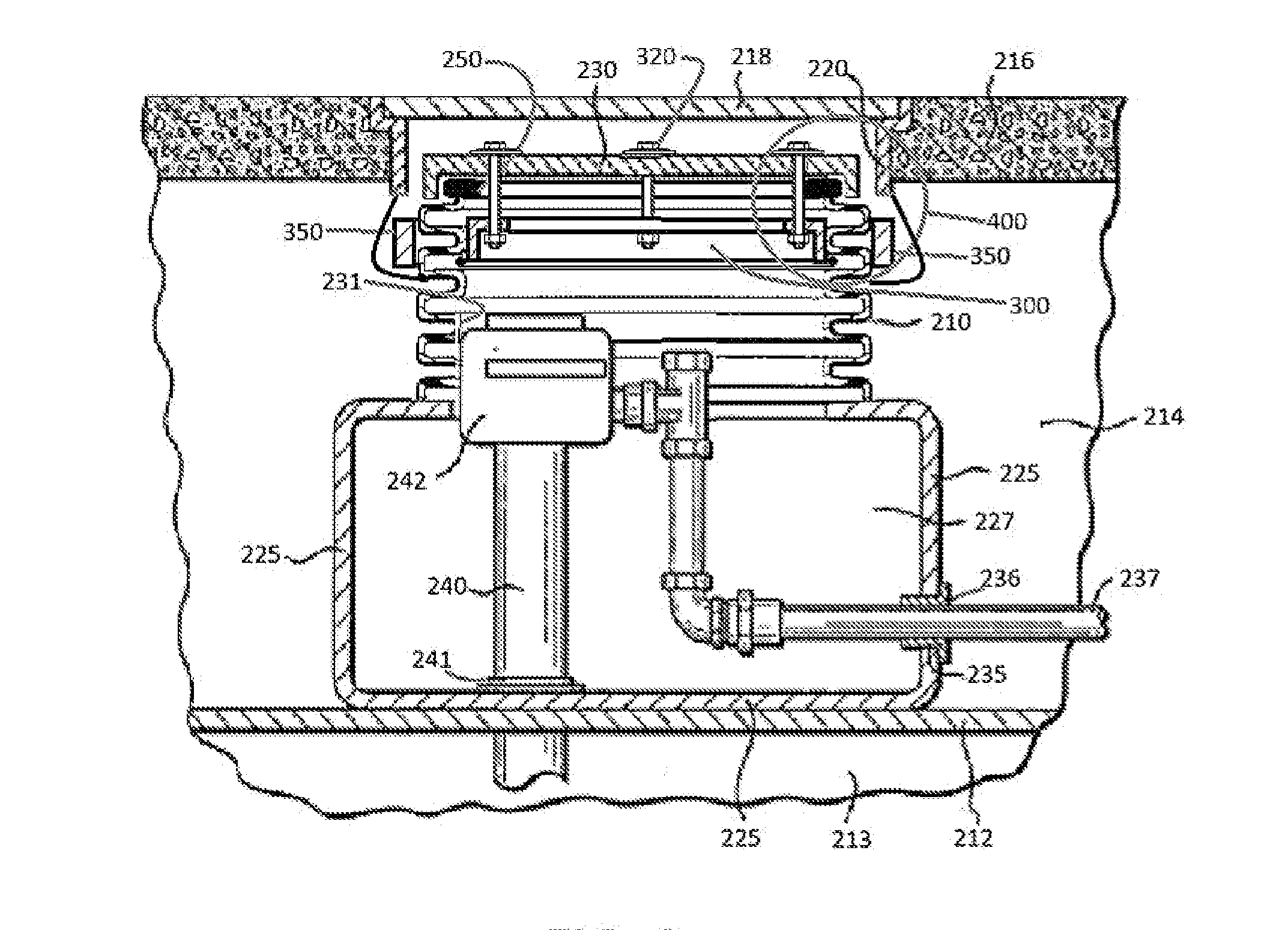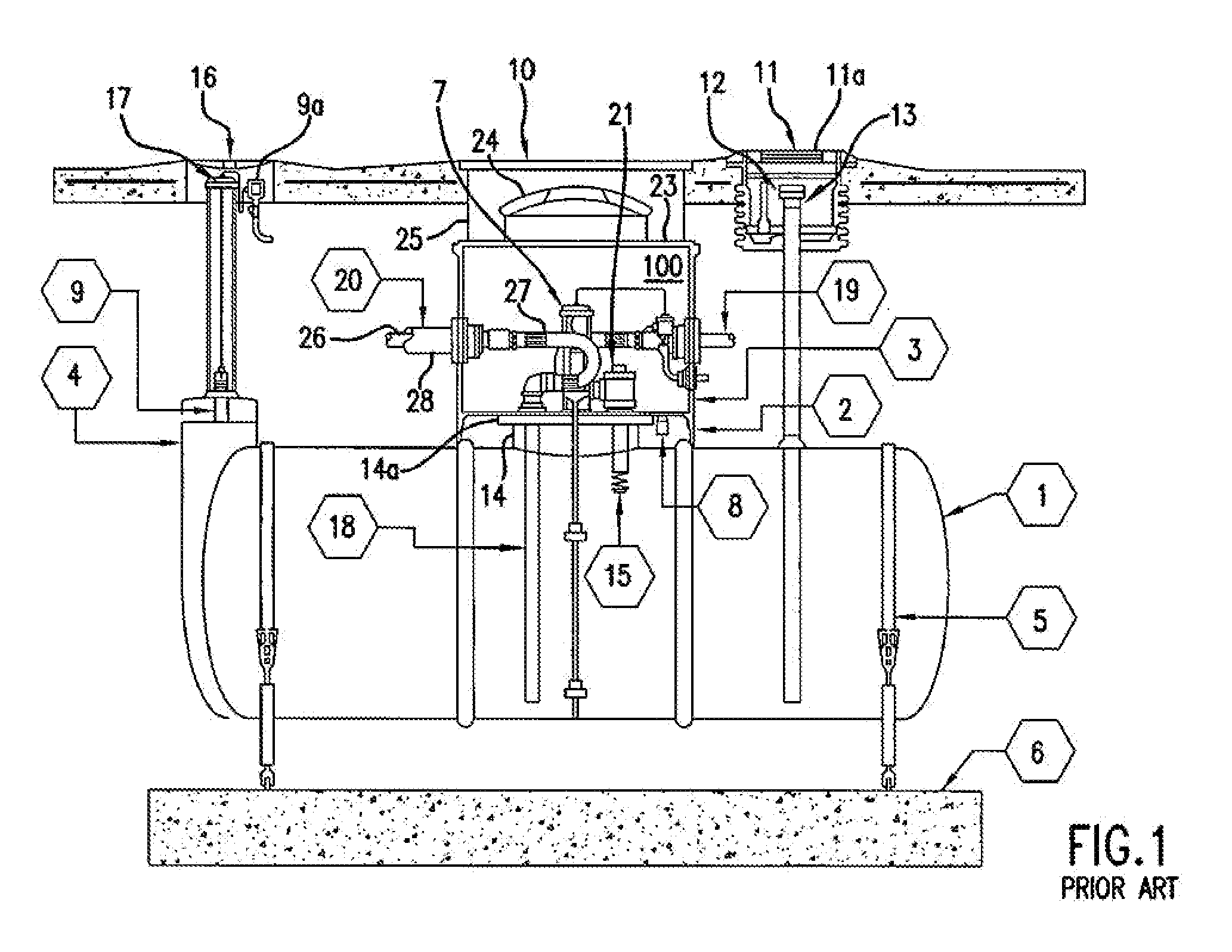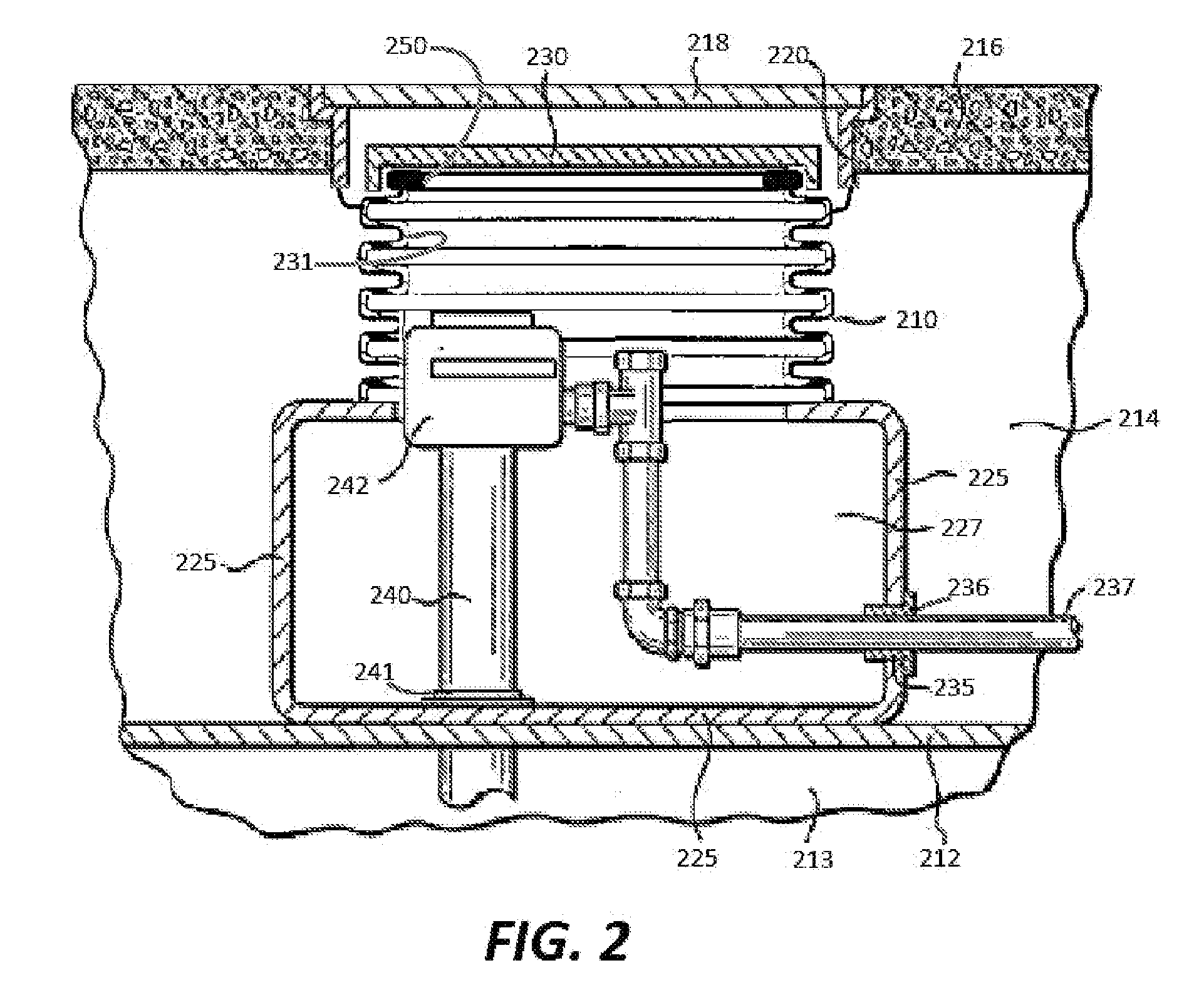System and method for sealing sump covers
a technology of containment sumps and system components, which is applied in the directions of mechanical equipment, transportation and packaging, building repairs, etc., can solve the problems of affecting the environment, affecting the sealing effect of the containment sumps, and affecting the sealing effect of the sumps,
- Summary
- Abstract
- Description
- Claims
- Application Information
AI Technical Summary
Benefits of technology
Problems solved by technology
Method used
Image
Examples
Embodiment Construction
[0038]In the following detailed description, various specific details, such as certain geometries and materials, are recited to provide a thorough understanding of specific examples of the present invention. These examples should not be understood to limit the present invention, which is intended to be defined solely by the claims. Further, certain method steps are delineated as separate steps for ease of understanding; however, these steps should not be construed as necessarily distinct nor order-dependent in their performance, unless otherwise indicated.
[0039]1. Typical Existing Underground Storage Tank Installations
[0040]FIG. 1 illustrates a typical underground storage tank installation, in this case, a gasoline tank installation. A double walled underground storage tank (“UST”) 1 is secured by a pair of retaining straps 5 attached to a pair of deadmen 6 (one of which is visible in FIG. 1). As is well known in the art, the straps 5 and deadmen 6 are sometimes necessary to prevent...
PUM
 Login to View More
Login to View More Abstract
Description
Claims
Application Information
 Login to View More
Login to View More - R&D
- Intellectual Property
- Life Sciences
- Materials
- Tech Scout
- Unparalleled Data Quality
- Higher Quality Content
- 60% Fewer Hallucinations
Browse by: Latest US Patents, China's latest patents, Technical Efficacy Thesaurus, Application Domain, Technology Topic, Popular Technical Reports.
© 2025 PatSnap. All rights reserved.Legal|Privacy policy|Modern Slavery Act Transparency Statement|Sitemap|About US| Contact US: help@patsnap.com



